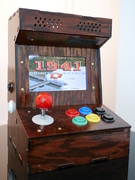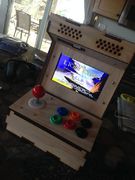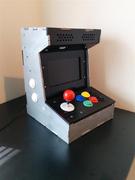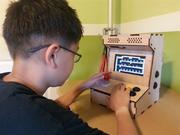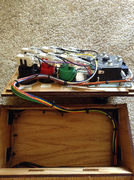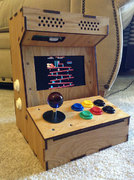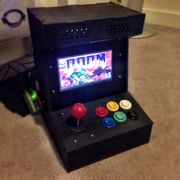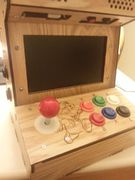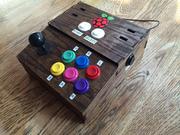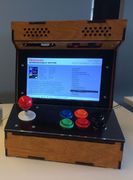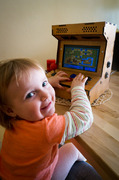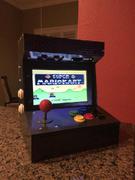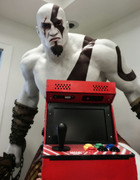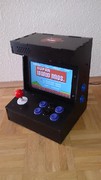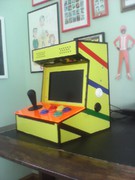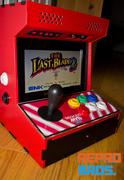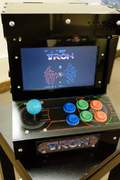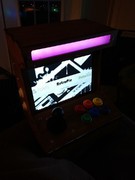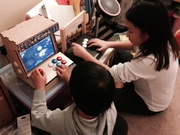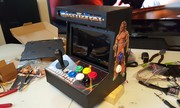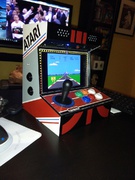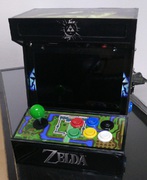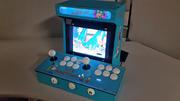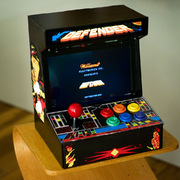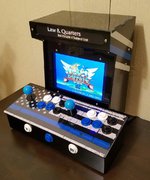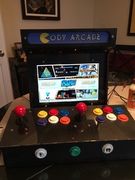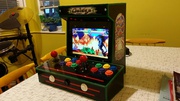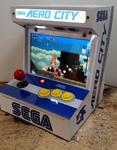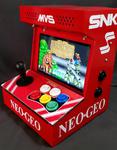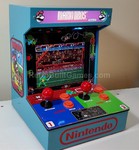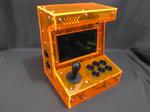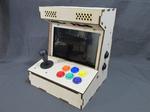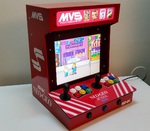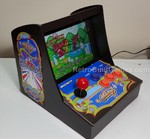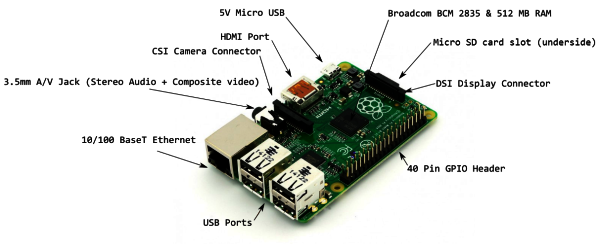Porta Pi Arcade Assembly: Help Topics
Jump to a section or use the navigation on the left:
Main Assembly Video + PDF guide
Power and Wiring (Solutions and Guides)
RetroPie SD Card Image and FAQs
This is just a 'preview' section showcasing how simple using the Porta Pi Arcade is. You can find more details within the PDF manual.
If you need some motivation or are wondering how other people managed their kits; here are some completed kits from my Kickstarter backers + newer Porta Pi owners. They look incredible everyone! If you bought a Kit please send me a picture of your finished Porta Pi! If you sent me a pic and it's not in the gallery, please just remind me to add it.
Porta Pi Arcade Wall of Game! (formerly known as the Hall of Fame).
Below are highlights of my work.
What is “Retro Gaming”? Commonly referred by the gaming community, ‘retro’ gaming is the love or appreciation of video games and their respective consoles more than two generations old. For example, the “16-bit” console generation of the early 90’s (like Nintendo’s Super NES) is succeeded by four video game generations; Nintendo 64 >Gamecube>Wii>Wii U making the Super NES a retro console. Current Commercial Products The vast majority of retro video games are out of print and no longer being published. Hardware for these game has been discontinued and left behind as they are replaced with the more powerful, updated game consoles.. This leaves the retro community with a hunger to play the classics of yesteryear and subsequently adds value and demand for games and systems no longer available in the market. The demand that cannot be met with the finite production of video games left in the market is satisfied by means of playing games on modern systems via emulation. The main video game industry (Sega, Nintendo, Sony, Microsoft) has been a late adopter of emulation as the it relies heavily on multiple factors; broadband server infrastructure, licensing, system cross-compatibility and developer royalty agreements for games no-longer in print. Not to mention studios and developers that are no longer in business.Sega and Ninendo are the bigger adopters of emulation (Vitual Console, Compilation disks, NES/SNES Classic mini) as both own their internally developed IPs. What is Emulation? Emulation allows more capable processors to mimic older hardware architectures in software. Retro game consoles can be emulated in software with a substantially more powerful system than the hardware being emulated. The Raspberry Pi, is a great candidate for this task, as it’s 700MHz processor is between 40x and 700x more powerful than retro game consoles from the early 1990’s to late 1970’s. The Raspberry Pi community has made this Linux system a prime contender for emulation. Computer Architecture Best to get a book on this. It's a 'lengthy' topic :)
The Raspberry Pi
There are three important pieces to getting your Raspberry Pi emulating the classic games you own. These pieces are the Raspberry Pi (computer), an SD card (memory), the RetroPie Operating System, an input device (game controller) and an output device (HDMI monitor).
For the hardware, we will be using a Raspberry Pi Model B+ (Note the Pi 3 the more powerful and current option), a single board Linux computer with a 700MHz Broadcom processor at its core.
The Raspberry Pi features some capable hardware in a tiny package, with a tiny price to match. The 700MHz Broadcom (BCM2835 ARM) processor is a heart of the this board, paired with a capable 512MB of RAM. Connect your mouse, keyboard, monitor and SD card into your RPi (Raspberry Pi). Your SD cards were pre-installed with RetroPie v2.3, a open-source community project of programmers and retro-gaming enthusiasts for emulating retro games on the RPi computer. You can find the download link for the current version of RetroPie at retropie.org.uk

